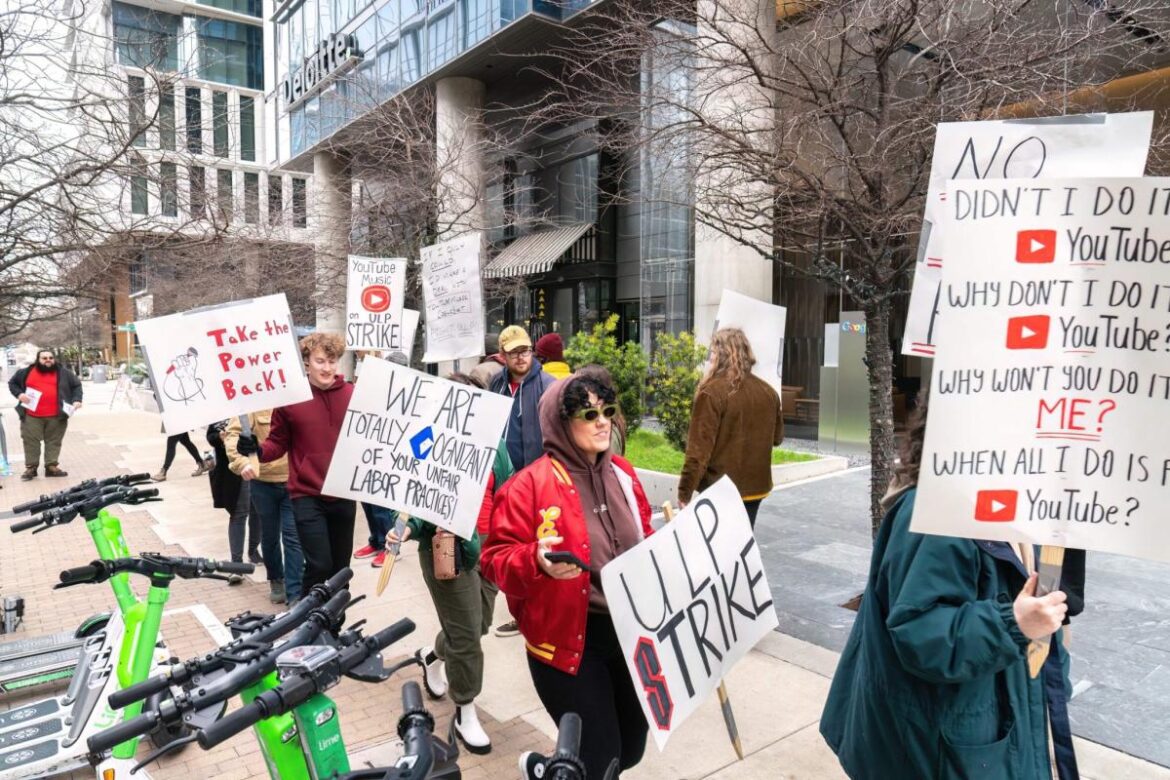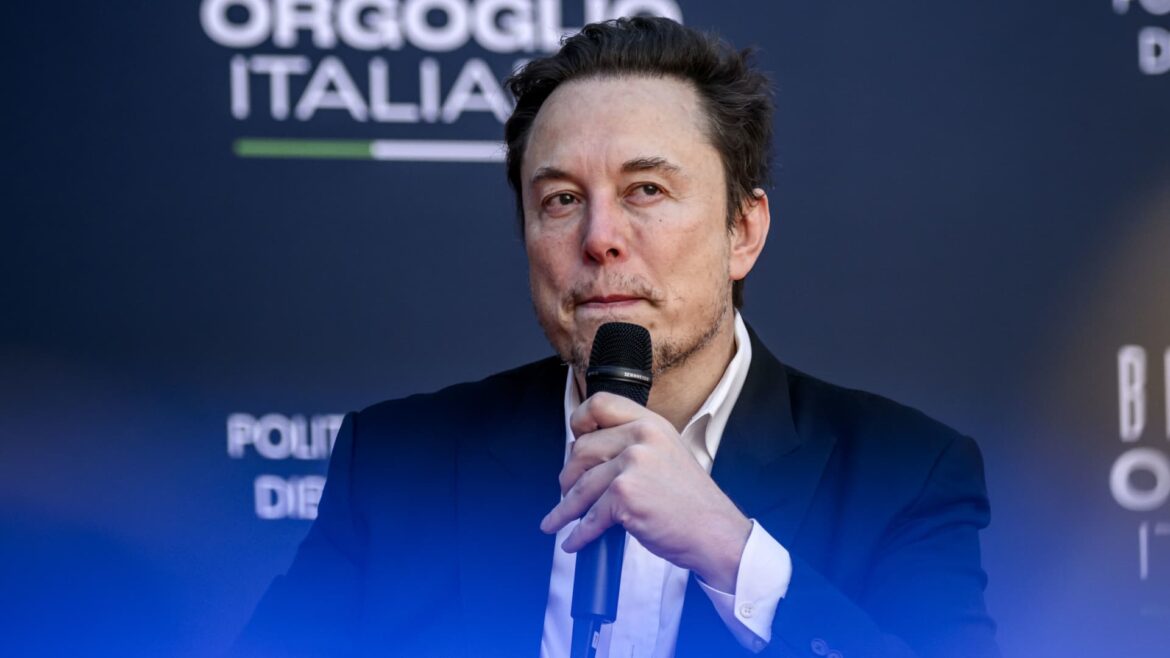
AMC Entertainment Holdings Inc. CEO Adam Aron’s compensation package increased to $25.4 million in 2023, from $23.7 million in 2022 and $18.9 million in 2021, according to a proxy statement filed with the SEC Friday.
Source link
Pay
Costs at some colleges near $100,000 a year; many families pay a lot less
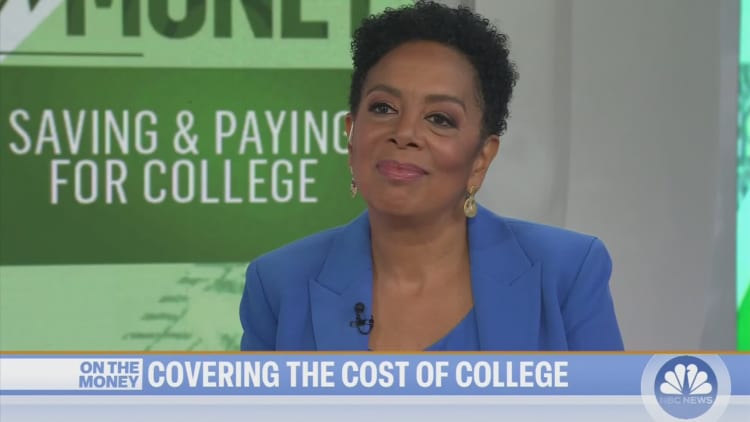
The price tag for a college education has never been higher — and it’s only going up.
The cost of attendance at some schools, including New York University, Tufts, Brown, Yale, and Washington University in St. Louis, is now nearing six figures a year, after factoring in tuition, fees, room and board, books, transportation and other expenses.
Among the schools on The Princeton Review’s “The Best 389 Colleges” list that have already set their costs for the 2024-25 academic year, eight institutions have a sticker price of more than $90,000 per year so far, according to data provided to CNBC.
Considering that tuition adjustments average roughly 4% a year, those institutions — and others — could cross the $100,000 threshold as soon as 2026, according to an estimate by Bryan Alexander, a senior scholar at Georgetown University.
However, that’s not what many families pay.
More from Personal Finance:
FAFSA fiasco may cause drop in college enrollment, experts say
Harvard is back on top as the ultimate ‘dream’ school
This could be the best year to lobby for more college financial aid
“Crossing a school off the list of consideration based on sticker price alone is a mistake,” said Robert Franek, editor-in-chief of The Princeton Review.
He said about two-thirds of all full-time students receive aid, which can bring the cost significantly down.
Net price: Your net price is tuition and fees minus grants, scholarships and education tax benefits, according to the College Board.
The Princeton Review even ranked colleges by how much financial aid is awarded and how satisfied students are with their packages. These are the colleges that came out on top.
At Washington University in St. Louis, for example, the average scholarship award is just over $65,000 per year, The Princeton Review found, which brings the total out-of-pocket cost closer to $26,000.
In fact, when it comes to offering aid, private schools typically have more money to spend, Franek said.
“When you factor in the average grant, these schools become some of the most affordable in the country,” he said.
What college really costs
The amount families actually spent on education costs in the 2022-23 academic year was, on average, $28,026, according to Sallie Mae’s annual How America Pays for College report.
While parental income and savings cover nearly half of college costs, free money from scholarships and grants accounts for a more than a quarter of the costs, and student loans make up most of the rest, the education lender found.
The U.S. Department of Education awards about $120 billion every year to help students pay for higher education. And beyond federal aid, students could also be eligible for financial assistance from their state or college.
But students must first fill out the Free Application for Federal Student Aid, which serves as the gateway to all federal money, including loans, work-study and grants.
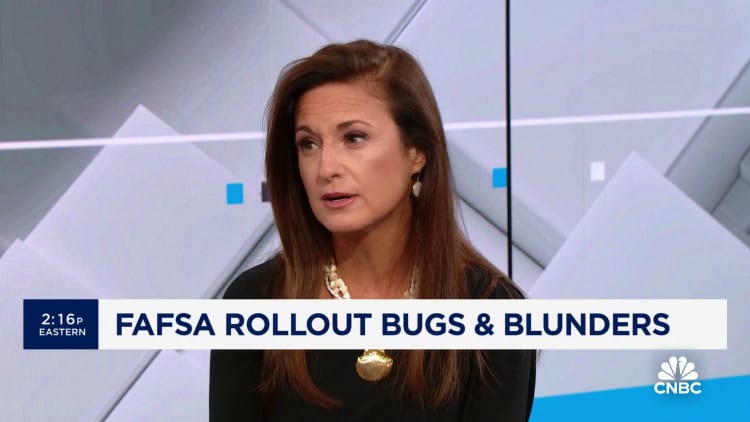
This year, problems with the new FAFSA have discouraged many students and their families from completing an application.
As of the last tally, 6.6 million FAFSA forms have been submitted. That’s a fraction of the approximately 17 million students who use the FAFSA form in ordinary years. And under the new aid formula, an additional 2.1 million students should be eligible for the maximum Pell Grant, according to the Department of Education.
“You cannot get away from the value of the FAFSA form even in these difficult times,” Franek said. “This is the key for unlocking the majority of financial aid dollars.”
Already, high school graduates miss out on billions in federal grants because they don’t fill out the FAFSA, experts say.
In total, the high school Class of 2022 left an estimated $3.6 billion of unclaimed Pell Grant dollars on the table, according to a report from the National College Attainment Network.
Don’t miss these stories from CNBC PRO:

Donald Trump is due to be handed a $3.5bn (£2.8bn) payday as the Republican presidential contender faces a looming deadline to pay a huge legal bill, after his social media company passed the final obstacle to a Wall Street listing.
On Friday, shareholders in Digital World Acquisition Corp, a listed cash shell, voted to approve a merger with Trump Media & Technology Group (TMTG), the company behind Mr Trump’s social network Truth Social.
It means TMTG will join the Nasdaq exchange as early as next week. Mr Trump will own a majority of the combined company with a stake worth around $3.5bn.
Mr Trump has until Monday to pay a $454m bond to a New York civil fraud case and authorities could seize his assets if he does not pay. He must pay the bond as he seeks to appeal a ruling that he fraudulently inflated the value of his assets.
While he would not be able to sell his shares for six months, the merger of TMTG and Digital World may buttress Mr Trump’s finances.
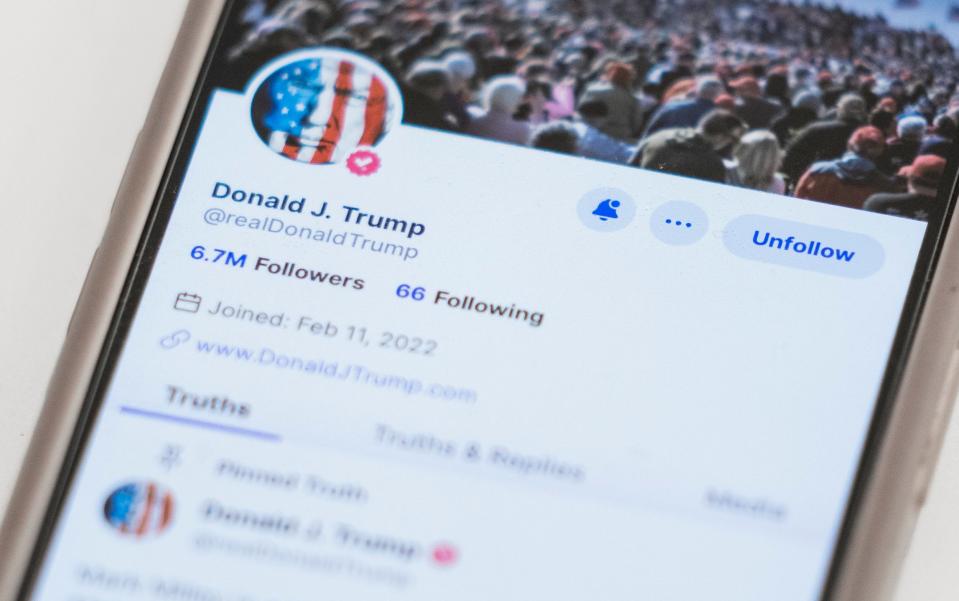
The merger had faced late hurdles amid uncertainty over whether Arc Global Investments, Digital World’s largest shareholder, would support the deal. But Digital World secured enough support in a shareholder meeting on Friday.
Shares in Digital World have surged by 145pc this year, a phenomenon believed to be in part due to Mr Trump’s voters buying up the shares as a show of support.
TMTG and Digital World secured regulatory approval to go ahead with the deal last month, opening the door to the long-delayed merger.
Truth Social, announced by Mr Trump in 2021 after he left office, is similar to Twitter, from which the former president was banned after the January 6 Capitol Hill riots.
It allows users to send out short messages, reply and “re-truth” other people’s posts. Mr Trump typically posts several times a day on the service, despite his ban from Twitter being rescinded.
TMTG lost $49m in the first nine months of 2023, while revenue rose from $237,000 in the first nine months of 2022 to $3.4m.
14% of companies say workers have quit after seeing jobs with higher pay
Pay transparency policies, where businesses actively share the salary range on an open job, are becoming the norm.
A majority, 60%, of companies now share pay ranges in job ads as of Payscale’s latest report on compensation best practices, which surveyed more than 5,700 business leaders and HR pros in late 2023. That share is up by 15% from the previous year and includes 21% of employers who say they list salaries because it’s required by law, and another 39% who do so regardless of any local or state-wide legislation.
Ten states have passed pay range transparency laws: California, Colorado, Connecticut, Hawaii, Illinois, Massachusetts, New York, Nevada, Rhode Island and Washington. Other towns and municipalities, including Washington, D.C.; Cincinnati, Ohio and Toledo, Ohio have salary range laws on the books, too.
Still, 13% of businesses say they’re actively resisting pay transparency — up slightly from the previous year. Businesses say they don’t want to follow new laws because putting systems in place to standardize and publicize their pay structure is too expensive, or because they don’t want competitors to know how much they pay, Lulu Seikaly, senior employment counsel at Payscale, said during a briefing with reporters.
Some companies may fail to fully comply with new laws by posting ranges that are too wide to be helpful, or they may resist posting remote jobs that can be done from a state that does require pay transparency.
Resistance to salary transparency doesn’t go over well, Seikaly says.
A separate 2023 Payscale report finds that workers who don’t feel their employer is transparent about pay are more likely to look for a new job.
Anecdotally, pay transparency boosts morale, “and for companies that don’t do it, you can tell from their from their internal organizations” through employee engagement and turnover, Seikaly says.
Payscale experts say employers now bound by pay transparency laws are seeing their workforce engage in the topic. Some 27% say employees have been asking more questions about their pay.
It’s empowered workers, too: 14% of business leaders say employees have left because they saw job postings with higher pay elsewhere, and 11% have seen a job posting within the organization and realized they were being paid less for a similar job.
More than 1 in 4 workers lives in a place where they’re entitled to see the pay range for a role in the job listing.
Business leaders say compensation is their top challenge of 2024, with half saying it’s a high-priority investment area in the coming year, closely followed by recruitment and retention.
Want to land your dream job in 2024? Take CNBC’s new online course How to Ace Your Job Interview to learn what hiring managers are really looking for, body language techniques, what to say and not to say, and the best way to talk about pay.

Unionized Google workers learned their jobs were over while testifying to City Council about why they need higher pay
Rather than meeting employees at the bargaining table, Google decided to do what could be described as the equivalent of hucking the table into the sky. This week, YouTube Music workers who were recently locked in a tense union fight with Google were laid off while in the middle of testifying before Austin City Council.
In a video of the testimony, Jack Benedict spoke of their unionization efforts, explaining that a group of less than 50 was determined to fight two of the largest corporations in the world (Google and its subcontractor Cognizant). During the speech, another employee approaches and says “They just laid us all off. Our jobs are ended today, effective immediately.” Benedict, visibly shocked, responds “wow,” and they leave the podium as they’re told their time is up.
This all comes in light of a year-long fight, after a group of 58 employees on the YouTube Music Content Operations Team unanimously voted to unionize as part of the Alphabet Workers Union last spring, in an election overseen by the National Labor Relations Board (NLRB), per a press release by Austin City Council Members. Employes spoke of the need for better pay, benefits, and a more flexible return-to-office policy.
The news of Google laying off the YouTube Music team broke before the results of an Austin City Council vote on a resolution calling for Google and Cognizant to negotiate with the YouTube Music Content Operations Team. The resolution passed 9-1.
“While workers were at city hall testifying, they received word that their team had been laid off. Instead of getting the chance to stay and celebrate the passage of their resolution they instead needed to leave to go retrieve their personal belongings from their office,” according to an Austin City Council press release. “Many of the workers feel they could lose their homes due to the sudden and unexpected layoff, which some of them believe could be retaliation for standing up today.”
The dark side of tech
Employees unionized as part of the larger fight for better pay and benefits and petitioned Google to come to the table for negotiations, but the software company had refused. The company has claimed that because the employees are contractors, Google is not responsible for bargaining; instead, the contractor, Cognizant, is. But the NLRB has said otherwise, ruling Google and Cognizant as joint employers of YouTube Music workers.
The NLRB has ruled that Google’s refusal to bargain with YouTube Music workers is illegal. The board also introduced a new rule this December that would “make it even harder for companies like Google to argue they aren’t responsible for dealing with unionization efforts by third-party contractors,” according to the Verge.
Indeed, in a statement to Fortune, a Google spokesperson says that the Austin-based unionized workers are “not Google employees. Cognizant is responsible for these workers’ employment terms, including staffing.” They add that they “have no objections to Cognizant employees electing to form a union. We simply believe it’s only appropriate for Cognizant, as their employer, to engage in collective bargaining,” and say that Google will be appealing the NLRB’s ruling that stated otherwise.
Google also denied that it fired the YouTube Music workers, saying this was a routine end of contract “which was agreed to with Cognizant.”
After this story’s publication, a Cognizant spokeperson told Fortune, “ramp-downs and ramp-ups of projects are a normal part of Cognizant’s business operations. This contract ended at its planned expiration date. “
The spokesperson added that the former YouTube Music workers “will become part of Cognizant’s deployable talent pool, better known as our ‘bench,’ where they are given seven (7) weeks of dedicated, paid time to explore other roles within the organization and build new skills through our training ecosystem. “
Still, the Alphabet Workers Union said that the contract end had come as a surprise, with no notice to affected workers.
As a former employee noted, the NLRB has twice ruled that Google and Cognizant are joint employers of these contractors and that Google has illegally changed working conditions without contacting the union.
Alphabet Workers Union directed Fortune to its public statement on the issue, which mentioned how many employees were forced to work multiple gigs to make ends meet and were unable to meet the mandate to work in person as they were “not paid enough to afford the associated expenses with in-person work, like gas and childcare costs.” They also highlighted a quote from the regional director of the NLRB in Fort Worth, Texas, from last year’s ruling that found the contractors were employed by both Alphabet and Cognizant. “Google exercises direct and immediate control over benefits, hours of work, supervision and direction of work,” said the regional director.
An employee who had worked at YouTube Music for three years opened up about how the tech job was not as cushy as it’s often stereotyped to be. “Truth of the matter is, we get paid $19 an hour here with awful benefits that come out of our paycheck and [we had] a restrictive PTO policy,” they said in an Instagram post. “This is simply not enough to live with any kind of comfortability in this city which is, across the board, significantly increasing its average cost of living year by year.” Adding that the group unionized to change these conditions and pay, the employee notes that the gig was easier when working remotely as they could save money by skipping a commute and making food at home.
“Google and Cognizant have profited immensely off of our labor and consequently -for lack of a better word- fucked us,” says the employee.
Update, Mar. 1, 2024: This story has been updated with a response from Cognizant.
This story was originally featured on Fortune.com
How to make sure you pay a fair price for the financial advice you need.

When shopping for a financial planner, it’s natural to ask, “How much do you charge?” If you expect a simple, one-sentence answer, think again.
There are many ways that advisers get paid and it can get complicated. Their fee structure reflects the type of practice they want to run and the business model that reinforces their brand.
One of the best ways to vet an adviser is to ask how they arrived at their fee structure and why they chose it. What motivates them to charge the way they do?
“Every adviser loves to argue about which way [of getting paid] is the best and which is the worst,” said Chris Cybulsky, a certified financial planner in Austin, Texas.
Many advisers base their pay on a percentage of assets under management (AUM). The percentage, traditionally 1%, often varies based on the amount of a client’s investable assets.
Other popular options include charging an hourly fee or flat per-project fee (perhaps to craft a customized financial plan). In recent years, some advisers have adopted subscription pricing that offers tiers of ongoing service with different monthly or annual retainer fees.
If you want to hire an adviser for both financial planning and investment management, you might encounter a hybrid fee structure. That means you’ll pay a percentage of AUM for portfolio management plus a flat or hourly rate for financial planning (which could include help with household budgeting, retirement planning, estate or tax planning, etc.).
More advisers are favoring this hybrid approach because it stabilizes their income when markets plummet and clients’ investable assets shrink. It also gives them flexibility to serve a broader range of clients.
For instance, many early and mid-career professionals lack significant investments to manage or their assets are tied up in a tax-advantaged retirement account like a 401(k). But they may be willing to pay an adviser a flat fee for targeted financial advice and planning.
There are also advisers who earn commissions when they buy and sell certain financial products (such as annuities or mutual funds) or insurance policies on the client’s behalf. “Fee-only” refers to advisers who do not charge commissions and generate all their income from fees.
An adviser’s fee structure is revealing in itself. Those who prefer financial planning to portfolio management tend to charge flat or per-project fees that reflect the relative complexity of the client’s needs.
“You can tell how they think about the value of their service offering from the clarity and logic of how they present their fees,” said Sara Grillo, a New York City-based marketing consultant. “If they say they’re focused on financial planning, yet they are charging a fee on assets under management, you should be skeptical of any claims that the planning is robust.”
Indeed, it may indicate that the adviser wants to oversee as much of your assets as possible. The more assets you transfer to the adviser’s firm, the higher the adviser’s AUM fee.
“Their main concern might be to grow your assets and make sure those assets stay with them,” Grillo said. “I’m an advocate for flat fees because they promote more clarity and transparency.”
Advisers who work for big financial services companies are more apt to charge for AUM or collect commissions for selling specific products. That’s not necessarily a red flag: You can benefit if you want active investment management and the firm boasts top asset managers, proprietary research or access to alternative investments that can diversify your portfolio.
“If advisers charge an hourly rate or use a flat-fee model, they’re probably a smaller firm or sole practitioner,” said DJ Hunt, a certified financial planner in Melbourne, Fla. “So you may not get staff, just one set of eyes on everything.”
Know what you want
As long as you don’t need investment management — either because you’re a do-it-yourself investor or you don’t have much investable assets — then paying fees solely for financial planning expertise can make sense.
It’s easier to evaluate an adviser’s pricing if you know what you need from the outset. Asking a wealth manager to take your $300,000 or $1 million portfolio and make investment decisions that produce reasonable returns and reflect your risk tolerance is one thing. But if you’re more intent on learning whether to rent or buy a home, how to save for a child’s tuition or how to tell if you can afford to retire, you’re better off paying a fee for a skilled, credentialed financial planner.
“Assessing your needs can get tricky,” Hunt said. “When you first meet with an adviser, you may think you need help in just one area. That can lead to a broader discussion of other interrelated needs. Then you say, ‘I hadn’t thought of that’ and you realize it’s just the tip of the iceberg as your needs expand.”
More: Saving too little? Spending too much? How to know if your money worries are rational (or not).
Also read: How AI will change the ways financial advisers manage your money
Pay TV distributors are confused, concerned about sports joint venture
A Major League Baseball logo at Angel Stadium in Anaheim, California, May 22, 2022.
Ronald Martinez | Getty Images
It’s been about a week since Disney, Warner Bros. Discovery and Fox announced a new joint venture to offer live sports outside the traditional cable bundle, and pay TV distributors are still trying to figure out just how disruptive the new service will be.
The key question for distributors such as Comcast, Charter and DirecTV is whether they’ll be allowed to offer the same skinny bundle of linear networks that Disney, Warner Bros. Discovery and Fox announced will be available to consumers later this fall. That bundle includes ABC, ESPN, ESPN2, TNT, TBS, Fox, FS1, FS2, and a handful of other cable channels that showcase sports.
If Disney, Warner Bros. Discovery and Fox allow distributors to offer the same product, in addition to the standard cable bundle, there’s likely to be minimal consternation about the joint venture. But it’s not clear that will be the case, given that may defeat the purpose of its existence.
In 2023, Charter began offering a package of cable networks that didn’t include sports to lower the cost of cable TV for customers who only wanted news and entertainment. Offering sports to only those people who want to watch sports is good for distributors, but it’s harmful to programmers, who benefit from the millions of households that pay for sports but don’t watch them.
That’s why, logically, the new sports joint venture only makes sense if the three media companies bar distributors from offering the same product.
So far, the largest pay TV distributors haven’t spoken publicly about the forthcoming bundle because they’re still gathering information on the joint venture’s plans, according to people familiar with their thinking, who asked not to be named because the discussions have been private.
Privately, however, leaders at Disney, Warner Bros. Discovery and Fox have begun to hear complaints from some distributors, who are concerned the new skinny bundle will lead to increased cable TV cancellations, according to people familiar with the matter.
Terms of agreement
Pay TV distributors typically strike most-favored-nation deals with programmers that allow contracts to be replicated among like partners. It guarantees that a company such as Disney can strike a deal with DirecTV that’s similar to its deal with, say, Dish.
If the sports joint venture refuses to allow distributors the same terms as it’s offering retail customers, distributors could either refuse to carry their networks when carriage renewal deals are up or even sue, according to Craig Moffett, an analyst at MoffettNathanson.
“The distributors have been begging for the right to offer cheaper and skinnier bundles, especially bundles that would segregate expensive sports from cheaper non-sports programming, for at least two decades, and they’ve been met with a brick wall,” Moffett said. “At the very least, this would seem to violate the most favored nation clauses that prohibit the programmers from offering better terms and conditions to another distributor, even if that distributor is a JV [joint venture] of the programmers themselves. I would be surprised if there aren’t some lawsuits.”
Disney, Warner Bros. Discovery and Fox all rely on the pay-TV distributors for the bulk of their revenue.
And while some stand to indirectly benefit from the potential popularity of the joint venture — Charter and Comcast, for example, could see a boost to their broadband businesses, since the digital app would require high-speed internet service for best performance — others, such as DirecTV, Dish and YouTube TV stand more directly in the crosshairs and could lose video subscribers.
Still, early conversations between distributor executives and leaders at Disney, Warner Bros. Discovery and Fox haven’t been particularly substantial, because limited information has been disclosed about the strategy of the joint venture, which hasn’t been formally named or even legally agreed upon by the companies.
“The formation of the pay service is subject to the negotiation of definitive agreements amongst the parties,” Disney, Warner Bros. Discovery and Fox said in a statement last week.
No leader for the joint venture has been named yet, although one has tentatively been selected, according to people familiar with the matter. Puck reported Tuesday the front-runner is former Apple executive Pete Distad.
Disclosure: Comcast owns NBCUniversal, the parent company of CNBC.
WATCH: Paramount Global CEO speaks about new joint sports venture
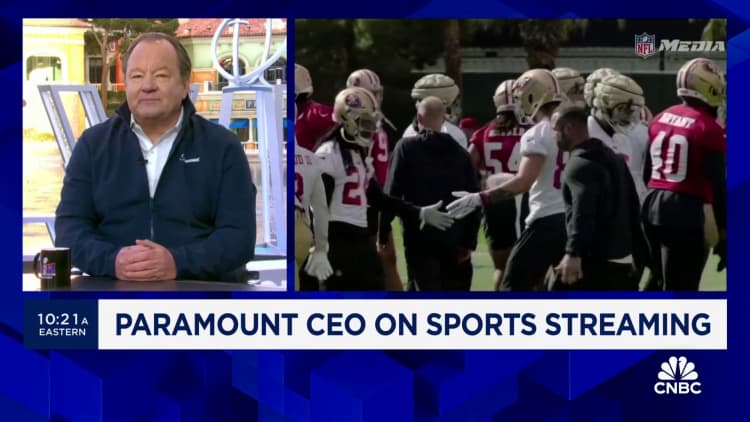
Tesla board silent since court revoked Elon Musk’s $56 billion pay package
Elon Musk, CEO of Tesla and X, speaks at the Atreju political convention organized by Fratelli d’Italia (Brothers of Italy), in Rome, Dec. 15, 2023.
Antonio Masiello | Getty Images
Two weeks after a Delaware court ruled that Tesla must rescind Elon Musk’s $56 billion pay package, the company’s board remains mum on what the decision means for shareholders or what’s next for the mercurial CEO.
In her 200-page opinion on Jan. 30, Chancellor Kathaleen McCormick called the pay plan the largest in public corporate history, and said it was agreed upon by people “who were beholden to Musk.” Since then, Musk has lashed out at the court, posted “Never incorporate your company in the state of Delaware” on his social media platform X, and said Tesla would hold a shareholder vote to move its site of incorporation to Texas.
Tesla hasn’t yet issued an SEC filing to notify shareholders of the ruling.
The decision came shortly after Musk indicated that he’s pushing for even more control of Tesla, posting on X in mid-January that he wanted roughly 25% voting control before turning the company into a leader in artificial intelligence and robotics. Musk is already building an AI company called xAI outside of Tesla.
The next step in the compensation case is an “implementing order” that will be hashed out between the court, Musk’s team and the lawyers representing shareholder Richard Tornetta, a former heavy metal drummer who was the plaintiff in the 2018 lawsuit filed on behalf of all Tesla investors.
As shareholders await answers, Tesla’s eight-person board, which includes Musk, his brother Kimbal, Chairwoman Robyn Denholm and former Tesla technology chief JB Straubel, has stayed silent, avoiding any public comments.
CNBC sent requests for additional information to Tesla investor relations, Musk and some board members. They all went unanswered.
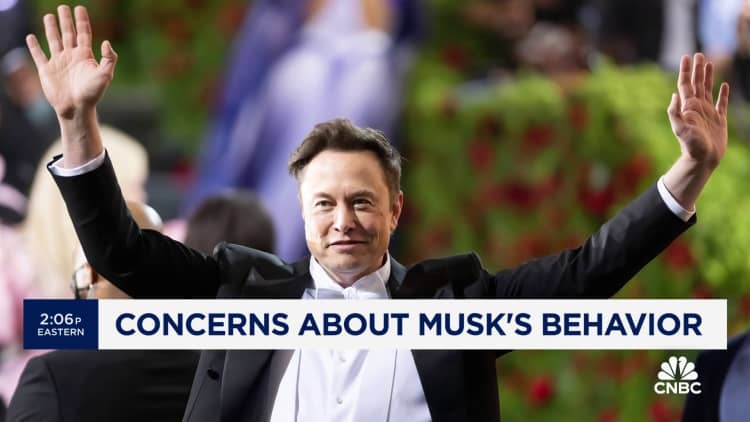
Greg Varallo, who was lead counsel for Tornetta and is head of the Delaware office of Bernstein Litowitz Berger & Grossmann, told CNBC that theoretically Musk and his legal team could still pursue a last-minute settlement. While Varallo said he has no knowledge of Musk’s plans, he said he expects Musk to appeal the decision to the Delaware state Supreme Court.
“I’d give you very high odds on that,” Varallo said.
Kobi Kastiel, a law professor at Tel Aviv University, also predicts that Musk will appeal the ruling. Kastiel wasn’t involved in the litigation but he co-authored a 2023 paper in the Washington University Law Review titled “Superstar CEOs and Corporate Law” that was cited in McCormick’s ruling.
“Given the high stakes involved, it is likely that Tesla will appeal the decision,” Kastiel said in an email. In the absence of a successful appeal, “any new compensation arrangement with him will have to be assessed” in light of McCormick’s decision, Kastiel said.
‘Bunch of options would be returned’
In the 2018 CEO compensation plan, Tesla’s board awarded Musk a dozen tranches of stock options that would finish vesting in 2022 and were based on milestones, including many focused on stock price increases.
Between the beginning of 2018 and the end of 2022, Tesla shares soared almost 500% as Musk promised to turn Tesla into not just a dominant EV brand, but a robotaxi company and solar juggernaut, among other things. The S&P 500 gained 44% over that stretch, while the Nasdaq rose 52%.
Eric Talley, a professor at Columbia Law School, told CNBC that, should the ruling stand, Musk will lose his options but not any shares he previously held. The move would decrease the number of shares outstanding, potentially bolstering the value of each share held by investors.
“A bunch of options would be returned to Tesla’s coffers, which is hugely accretive to stock value,” said Talley, who wasn’t involved in the case. On the other hand, Talley pointed out, “Tesla has a very grumpy CEO who might want to take his ball and go home. Thus far, trading suggests those two factors have been a wash.”
Tesla shares are down slightly since the Delaware court’s decision in late January. They’re down close to 25% for the year, while major indexes are up.
Musk voiced a strong preference for moving his businesses out of Delaware following the court’s decision, and encouraged others to do so as well.
He moved the incorporation location for his brain computer interface company, Neuralink, from Delaware to Nevada, filings revealed last week. He’s also been a big proponent of Texas in recent years, personally relocating there from California, and building massive complexes for SpaceX and Tesla in the state, which has no personal income taxes and a much lower business tax rate.
Author Walter Isaacson, who published a 688-page biography on Musk last year, told CNBC’s “Squawk Box” on Monday that if the ruling doesn’t get overturned, “it’s going to hurt Delaware.”
“People will say, ‘Wait, wait, you mean five years after something happens, eight years after something happens, you’ll go back and undo it?'” Isaacson said.
Tulane Law School professor Ann Lipton had a different take.
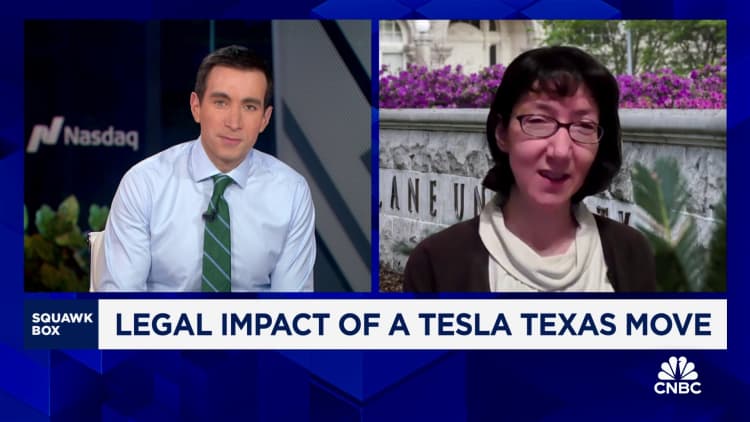
“It’s a very thorough opinion and the Supreme Court should give great deference to the factual findings of the trial court,” Lipton said.
In terms of what shareholders should ask of Tesla’s board now, Kastiel said, “Tornetta and recent media reports on Musk have emphasized the importance of accurate and detailed disclosure of the ties between controlling shareholders and directors.”
There’s a more fundamental concern at play, Kastiel said, regarding corporate governance in cases where a “superstar CEO” is running the show.
“As long as the CEO is perceived as a star and the company depends on the CEO’s vision and leadership, even nominally independent directors — those without strong ties to the CEO — will have difficulty monitoring the CEO’s conduct,” he said.
Kastiel also said that the decision likely makes Musk and Tesla more vulnerable to other types of lawsuits.
“Plaintiffs may have a better chance of advancing their claims by potentially leveraging the Tornetta findings to argue that the majority of the Tesla board is not independent of Musk,” he said. “To mitigate this risk, Tesla will need to significantly enhance the independence of its board and nominate new independent directors who do not have strong ties to Musk.”
WATCH: Elon Musk has a lot of ‘incoming missiles’ from all sides, says Isaacson










